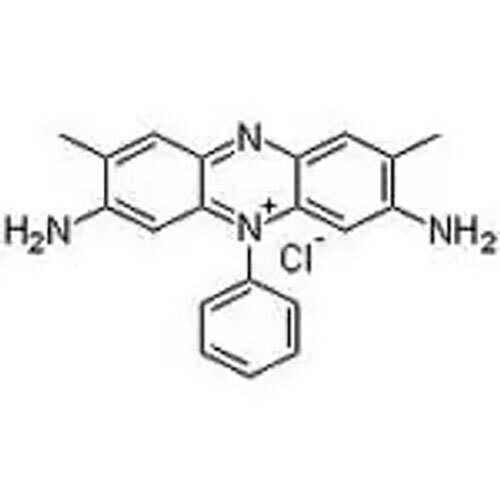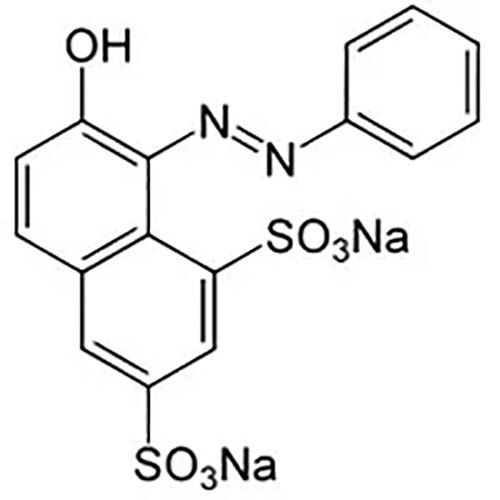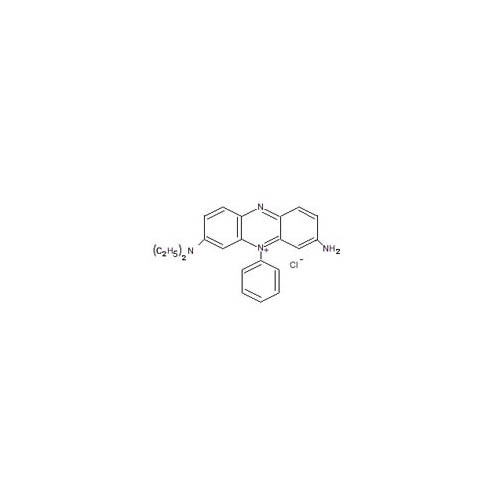Trypan Blue
Trypan Blue Specification
- Physical State
- Solid
- Melting Point
- >300C (decomposes)
- Packaging Type
- HDPE bottle/Glass bottle
- Usage
- Cell counting, viability assays, microscopic studies
- Storage Instructions
- Store at room temperature, protect from light
- Density
- Gram per cubic centimeter(g/cm3)
- Shelf Life
- ~5 years (if unopened and stored properly)
- Purity
- 99%
- Molecular Weight
- 960.8 g/mol
- Size
- 25 gm, 100 gm, 500 gm, or as required
- Grade
- Laboratory Grade
- Type
- Stain/Dye
- Application
- Biological Staining, Cell Viability Testing, Laboratory Reagent
- Appearance
- Dark blue to blue powder or crystals
- Purity(%)
- 99%
Trypan Blue Trade Information
- Minimum Order Quantity
- 100 Kilograms
- Supply Ability
- 50000 Kilograms Per Week
- Delivery Time
- 3-7 Days
About Trypan Blue
Trypan Blue:-
Trypan Blue is an important stain that is applied for specifically coloring the dead tissues or cells blue. The dye possess the property of passing though the cell membrane which are not dead and hence, it is absorbed by the dead ones selectively showing them as blue colored. The most common use of Trypan Blue is in microscopy for counting the dead cells. It is also used on the laboratory mice for assessment of tissue viability. We have a large stock of this product to meet the demands of our customers.
Some features of Trypan Blue:
- Can color the dead cells to help in counting the number
- Also known as diamine blue and niagara blue
- Used in microscopy for cell counting
- Suitable for observing fungal hyphae and stramenopiles.
MOQ 50kg
| Specification | |
|---|---|
| C.I.No. | 23850 |
| Common Name | Trypan Blue |
| Solubility | Water Soluble |
| Chemical Formula | C34H23N6O14S4Na4 |
| Molecular Weight | 960.82 gm/mole |
| Absorption Max | 608-610 nm |
| Absorptivity (A1%/1cm.) | > 600 |
| Dye Content | >60% |
Reliable Biological Staining
Trypan Blue is widely recognized for its effectiveness in distinguishing live from dead cells in cell viability assays. Its consistent staining and clear results make it an essential tool for researchers in cellular biology, tissue culture, and other laboratory applications.
Safe and Convenient Packaging
Delivered in HDPE or glass bottles, Trypan Blue comes in sizes ranging from 25 grams up to 500 grams, or as required. The packaging ensures safe storage and transportation, maintaining the stains integrity and protecting it from light and contamination.
Long Shelf Life and Easy Storage
With proper storageat room temperature and shielded from lightTrypan Blue has a shelf life of approximately five years if unopened. This long-lasting stability streamlines inventory management and reduces waste in busy laboratory environments.
FAQs of Trypan Blue:
Q: How is Trypan Blue used in cell viability testing?
A: Trypan Blue is commonly employed to distinguish live cells from dead ones. Live cells exclude the dye, while dead cells absorb it and appear blue, allowing for straightforward cell counting and viability assessment under a microscope.Q: What are the recommended storage conditions for Trypan Blue?
A: Store Trypan Blue at room temperature and protect it from light to maintain its stability. When kept unopened and stored correctly, it retains effectiveness for up to five years.Q: What benefits does Trypan Blue offer as a biological stain?
A: Trypan Blue provides fast, reliable results for viability assays, is easy to use, and offers high purity (99%), ensuring accurate and reproducible staining in cell counting or microscopic studies.Q: Is Trypan Blue hazardous to use in regular laboratory settings?
A: Under normal laboratory use, Trypan Blue is not classified as hazardous, making it safe for routine application following standard laboratory safety practices.Q: In what packaging sizes and types is Trypan Blue supplied?
A: Trypan Blue is available in HDPE or glass bottles, with common sizes including 25 gm, 100 gm, and 500 gm. Custom quantities can be provided upon request to suit specific laboratory needs.Q: Does Trypan Blue function as a pH indicator?
A: No, Trypan Blue is not a pH indicator. Its primary use is as a stain/dye for biological samples, particularly in cell viability and microscopic studies.

Price:
- 50
- 100
- 200
- 250
- 500
- 1000+
More Products in Biological Stains Category
Janus Green B
Price 50 INR
Minimum Order Quantity : 100 Kilograms
Molecular Weight : 511.06 g/mol
Purity(%) : ~90%
Application : Biological Staining, Indicator Dye, Mitochondria Staining
Storage Instructions : Store in a cool, dry place, protected from light
Safranine O
Price 75 INR
Minimum Order Quantity : 100 Kilograms
Molecular Weight : 350.85 g/mol
Purity(%) : >85%
Application : Biological staining, microscopy, textile dye, research
Storage Instructions : Store in tightly closed container, in a cool, dry place, protected from light
Orange G Dyes
Price 85 INR
Minimum Order Quantity : 100 Kilograms
Molecular Weight : 452.39 g/mol
Purity(%) : 99%
Application : Laboratory, Textile Industry, Biological Staining, Microscopy
Storage Instructions : Store in cool, dry place, away from sunlight
Diethyl Safranine
Minimum Order Quantity : 100 Kilograms
Molecular Weight : 378.91 Grams (g)
Purity(%) : 95
Application : Industrial
Storage Instructions : Cool & Dry Place
 |
MEGHA INTERNATIONAL
All Rights Reserved.(Terms of Use) Developed and Managed by Infocom Network Private Limited. |
 English
English Spanish
Spanish French
French German
German Italian
Italian Chinese (Simplified)
Chinese (Simplified) Japanese
Japanese Korean
Korean Arabic
Arabic Portuguese
Portuguese
 Send Inquiry
Send Inquiry




